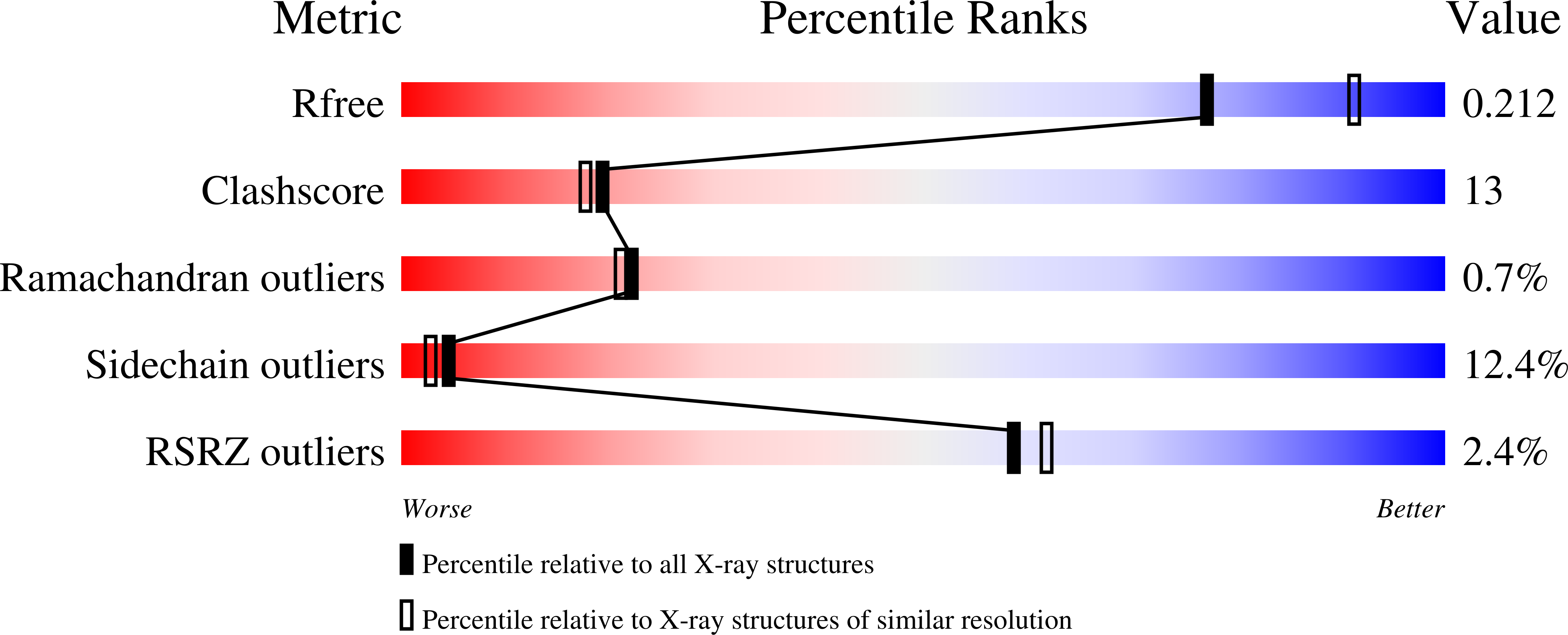Think twice: understanding the high potency of bis(phenyl)methane inhibitors of thrombin
Baum, B., Muley, L., Heine, A., Smolinski, M., Hangauer, D., Klebe, G.(2009) J Mol Biol 391: 552-564
- PubMed: 19520086
- DOI: https://doi.org/10.1016/j.jmb.2009.06.016
- Primary Citation of Related Structures:
2ZC9, 2ZDA, 2ZFP, 2ZGX, 2ZO3, 3DHK, 3DUX, 3F68 - PubMed Abstract:
Successful design of potent and selective protein inhibitors, in terms of structure-based drug design, strongly relies on the correct understanding of the molecular features determining the ligand binding to the target protein. We present a case study of serine protease inhibitors with a bis(phenyl)methane moiety binding into the S3 pocket. These inhibitors bind with remarkable potency to the active site of thrombin, the blood coagulation factor IIa. A combination of X-ray crystallography and isothermal titration calorimetry provides conclusive insights into the driving forces responsible for the surprisingly high potency of these inhibitors. Analysis of six well-resolved crystal structures (resolution 1.58-2.25 A) along with the thermodynamic data allows an explanation of the tight binding of the bis(phenyl)methane inhibitors. Interestingly, the two phenyl rings contribute to binding affinity for very different reasons - a fact that can only be elucidated by a structure-based approach. The first phenyl moiety occupies the hydrophobic S3 pocket, resulting in a mainly entropic advantage of binding. This observation is based on the displacement of structural water molecules from the S3 pocket that are observed in complexes with inhibitors that do not bind in the S3 pocket. The same classic hydrophobic effect cannot explain the enhanced binding affinity resulting from the attachment of the second, more solvent-exposed phenyl ring. For the bis(phenyl)methane inhibitors, an observed adaptive rotation of a glutamate residue adjacent to the S3 binding pocket attracted our attention. The rotation of this glutamate into salt-bridging distance with a lysine moiety correlates with an enhanced enthalpic contribution to binding for these highly potent thrombin binders. This explanation for the magnitude of the attractive force is confirmed by data retrieved by a Relibase search of several thrombin-inhibitor complexes deposited in the Protein Data Bank exhibiting similar molecular features. Special attention was attributed to putative changes in the protonation states of the interaction partners. For this purpose, two analogous inhibitors differing mainly in their potential to change the protonation state of a hydrogen-bond donor functionality were compared. Buffer dependencies of the binding enthalpy associated with complex formation could be traced by isothermal titration calorimetry, which revealed, along with analysis of the crystal structures (resolution 1.60 and 1.75 A), that a virtually compensating proton interchange between enzyme, inhibitor and buffer is responsible for the observed buffer-independent thermodynamic signatures.
Organizational Affiliation:
Department of Pharmaceutical Chemistry, Philipps-University Marburg, 35032 Marburg, Germany.



















